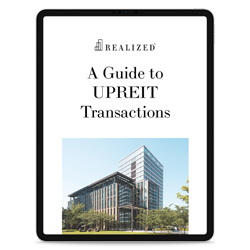Page 11 101 - 110 of 141
Are REITs Considered Alternative Investments?

Investing can be a way to earn extra income and plan for your future. One type of asset to consider investing in is real estate, in the form of REITs.
How Are REIT ETFs Taxed?

Real estate provides an investment opportunity that can further diversify your investment portfolio. If you’re planning on investing in real estate, you may be interested in REITs or REIT ETFs. A real estate investment trust (REIT) is a company that seeks to invest in or finance income-producing real estate across a range of property sectors.
Do REITs Have a Limited Lifespan?

The term REIT (Real Estate Investment Trust) refers in a broad sense to a type of organization that owns or invests in real estate or financial instruments related to real estate. REITs come in several varieties, and the differences can cause some confusion. However, the basic structure and requirements are as follows:
What Is a Residential REIT?

Real estate investors are often looking for ways to further diversify their portfolios. In the same way that investors who focus on publicly traded stocks don’t solely focus on one type of asset class, real estate investors often like to hold investments in varying types of real estate.
What are Qualified REIT Dividends?

A Real Estate Investment Trust (REIT) is a company that generally invests in real estate. These companies do not pay tax on their income, provided they distribute at least 90% of their profit to their shareholders as dividends. Depending on the type of REIT, this income is generated by rent payments, proceeds of the sale, and loan repayments.
What is a Mortgage REIT?

A mortgage Real Estate Investment Trust (REIT) is a trust that buys mortgages or offers real estate financing in the form of mortgages and mortgage-backed securities. The mortgages a REIT focuses on can be residential or commercial, or a mixture of both.
What Is a Retail REIT?

A Real Estate Investment Trust (REIT) is a company or trust that invests or finances income-producing real estate. Investors buy shares and can benefit from regular dividends if the REIT is profitable as well as from a potential price appreciation.
How Can I Choose REITs?

For some investors, real estate remains high on their list of preferred investment vehicles -- and in many cases, for good reason.
Do REITs Trade in the Secondary Market?

Publicly traded real estate investment trusts (REITs) offer investors many potential benefits, including the ability to invest in flourishing commercial real estate sectors coupled with the advantages that often come with publicly traded stocks, such as dividend, yield, appreciation and portfolio diversification.
How Do You Value a REIT?

Real estate investment trusts (REITs) are common financial instruments that give solo investors access to large-scale commercial real estate. Many investors purchase equity in publicly-traded REITs as a means to add real estate to their portfolios without having to own and manage real property assets themselves.
Page 11 101 - 110 of 141


